These Ocean Animals Are Pros at Sheltering in Place
Dive in and discover these ocean critters who naturally shelter in place
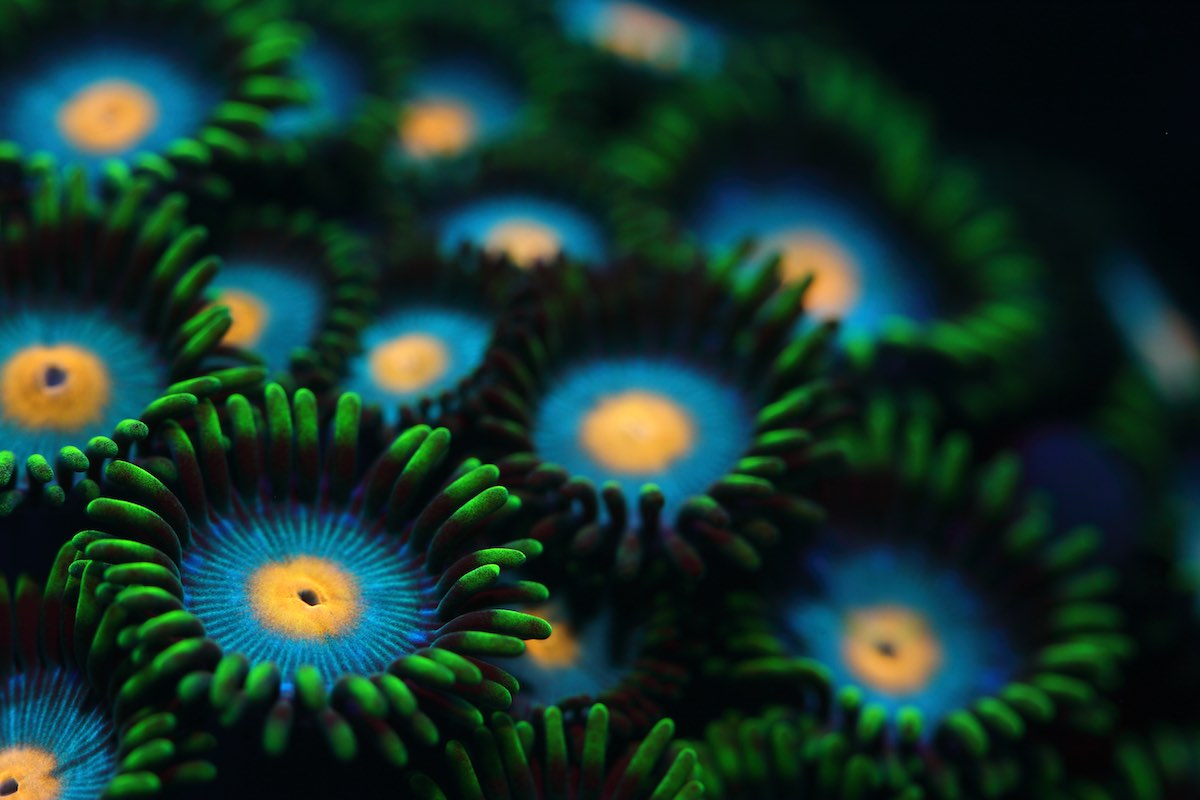
We’re in the midst of our “new normal” with COVID-19, and, for many of us, that means mandatory shelter-in-place orders from our cities or states. Even if it’s not required, hopefully, those who can stay at home are doing so, to help flatten the curve and to alleviate the pressure on our healthcare workers and essential workers.
We might be biased, but we think one of the best ways to give your mind a break from the news is to read about weird and wonderful ocean animals. Since we’ve already covered animals who are pros at social distancing, we thought we’d dive into animals who naturally shelter in place.
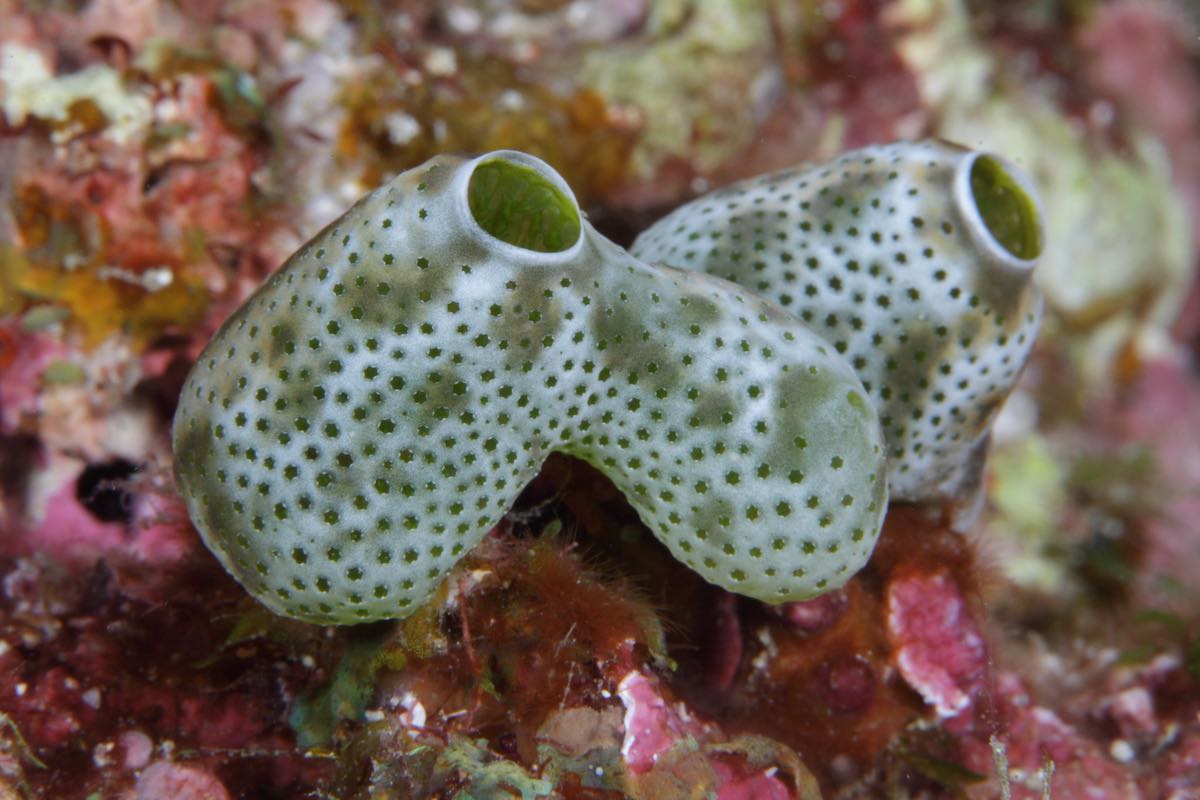
Tunicates
Tunicates are invertebrates in the phylum Chordata, which is the phylum that also includes all vertebrates (like otters, turtles and us!) That means these jelly-like animals are actually more closely related to humans than you might think. In their larval stages, they have a notochord, which is a rod-like structure that becomes part of a vertebral column in vertebrates. Most tunicates are fixed in one place, also known as sessile. One of the more common tunicates in the United States is the sea grape, which actually looks like small bunches of grapes that attach to reefs and docks. They use a siphon to pull water through their bodies and extract small pieces of food before ejecting the water out of another siphon.
What can we learn from tunicates? We have a lot more in common with each other than we think.
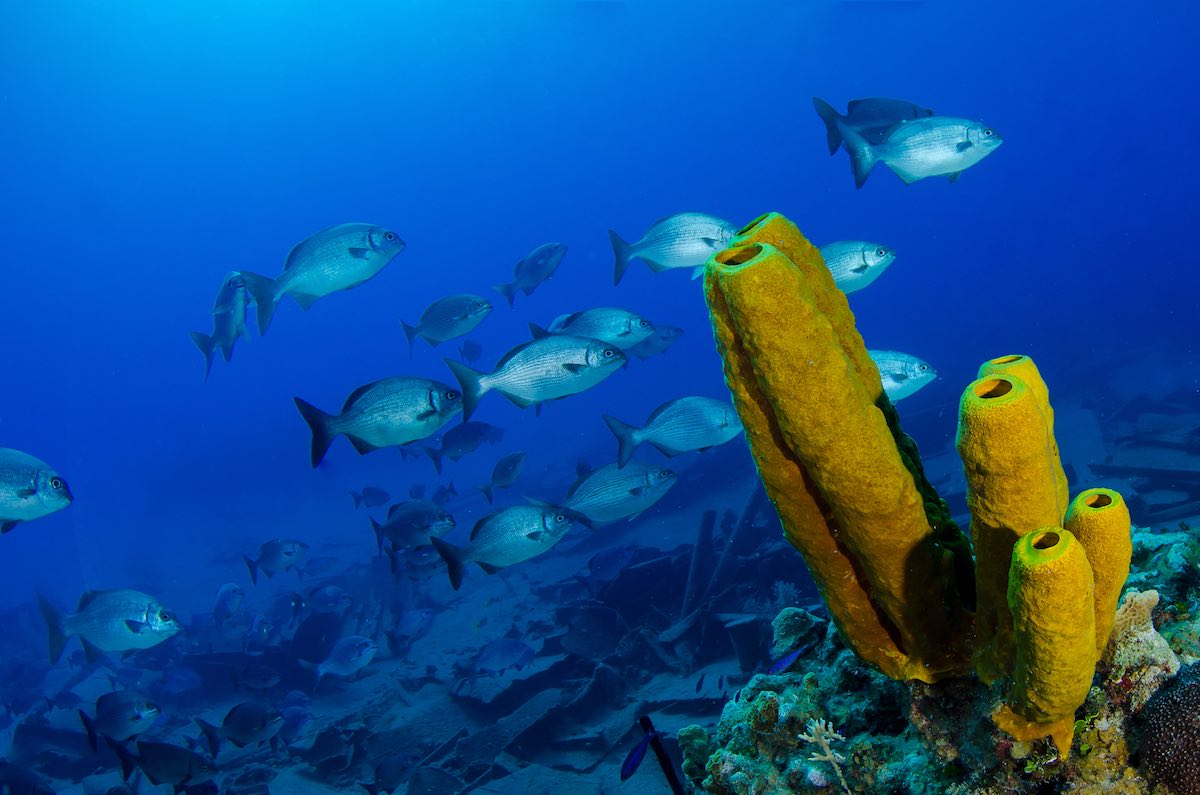
Sponges
Contrary to what you might think, sponges are actually animals! Sponges have been on earth for about 600 million years, and there are more than 8,500 species of sponges today. Sponges are pretty simple organisms, and yet are important members of aquatic ecosystems. They are filter feeders, meaning they pump water through canals in their bodies and extract food before pushing the water back out. They have a series of specialized cells called collar cells (also known as choanocytes) that have small tails that trap food as it floats by. Because they rely on filter-feeding, you’ll only find sponges in aquatic environments, and especially in marine habitats.
They might look squishy (like our kitchen sponges) but many species have structural components called spicules that help them keep their shape. Spicules can be made of calcium carbonate or silica and come in a variety of shapes, including some that resemble pins and some that resemble jacks.
What can we learn from sponges? We’re all tougher on the inside than we may seem.
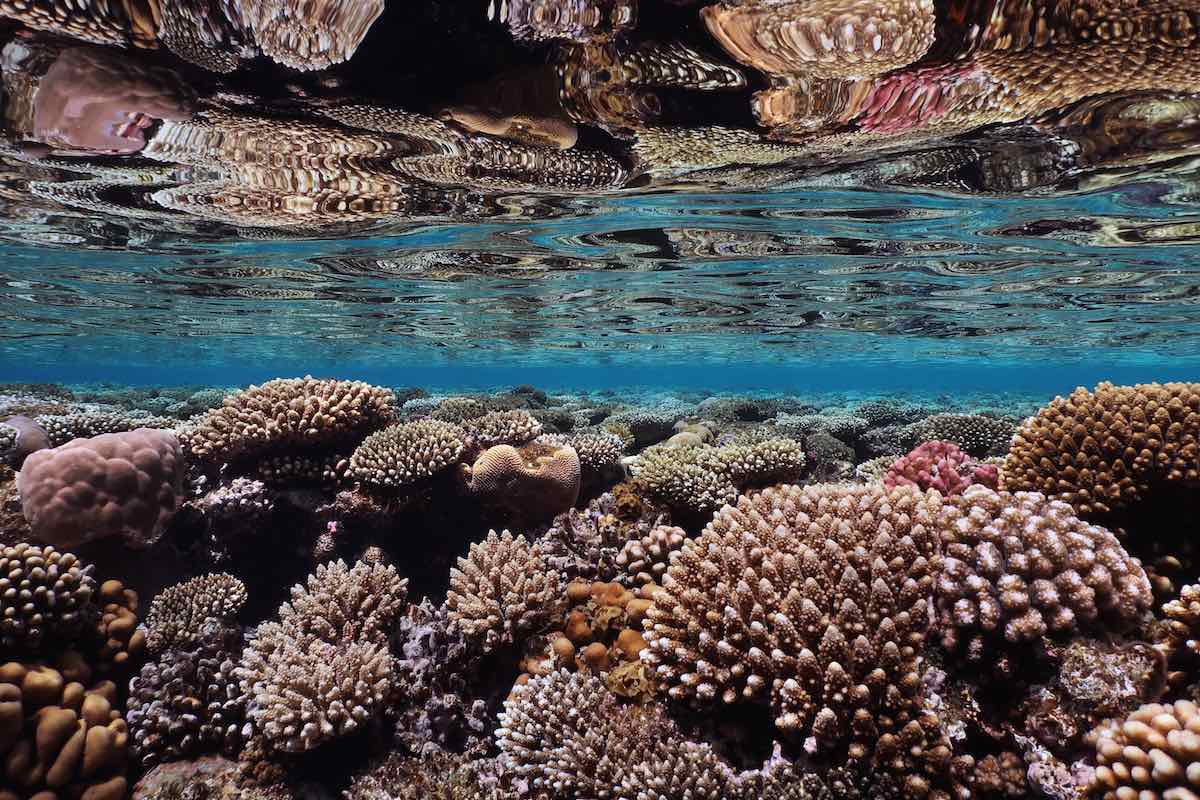
Corals
You are probably familiar with the beautiful coral colonies that make up our ocean’s coral reefs. But did you know coral colonies are actually made up of many small polyps? Polyps are soft-bodied and resemble tiny anemones (which makes sense because they’re related—they’re both in class Anthozoa). In hard corals, the polyps secrete calcium carbonate to create an external “skeleton” that protects them from predators. Polyps build on one another to create coral colonies that can stay in one place for hundreds of years.
They get their colorful hues from algae called zooxanthellae (polyps are actually see-through!). Polyps and zooxanthellae have a mutualistic relationship, where corals get food from the algae in exchange for protection in their hard structure.
What can we learn from corals? It’s okay to rely on friends for help.
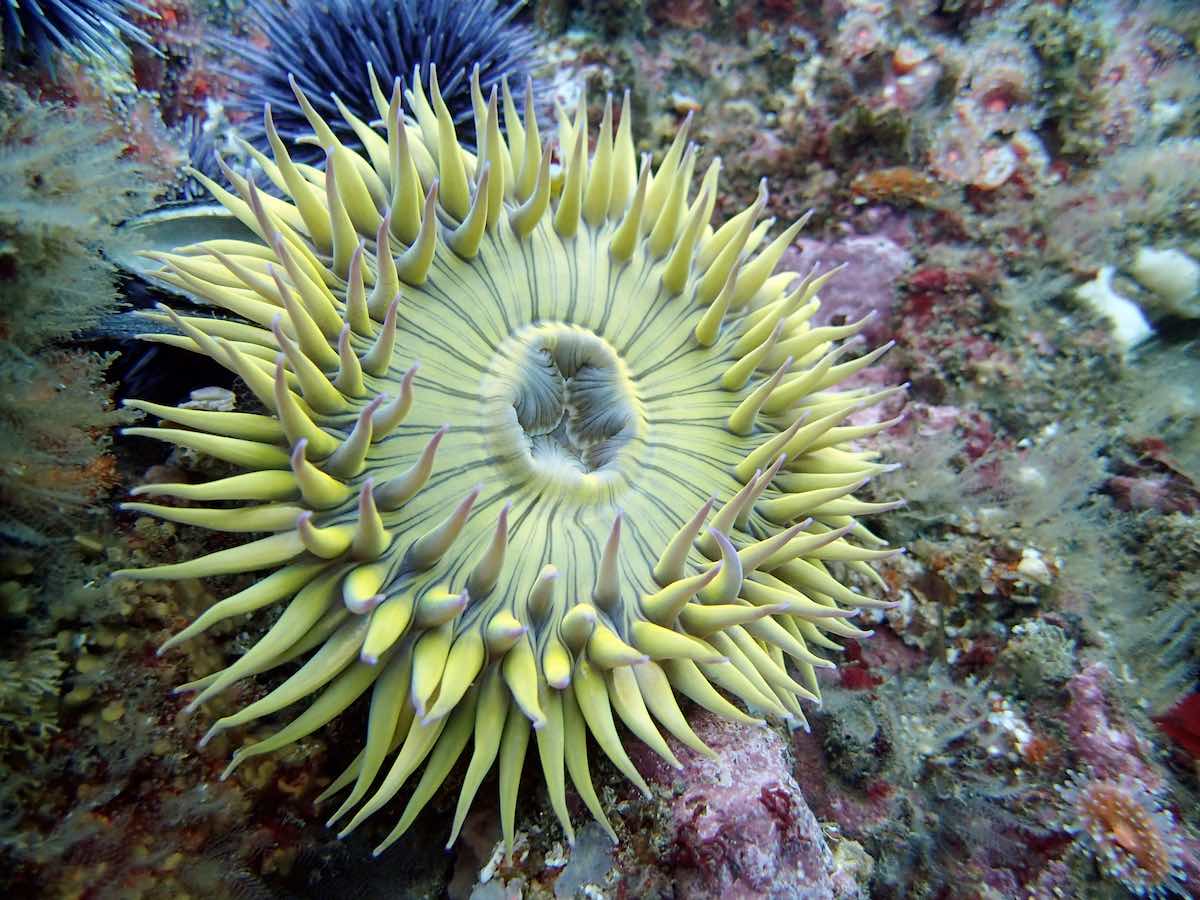
Anemones
Anemones may have a difficult name to pronounce (“Anemonny, anemoneni … Anemonemeony …” – Finding Nemo), but they are easy to spot on the ocean floor. There are more than 1,000 species of anemone in a range of bright colors. Anemones are in the phylum Cnidaria, along with corals and jellyfish. Cnidarians have stinging cells called nematocysts that help them defend themselves and stun and capture prey. Nematocysts look like tiny harpoons that fire out of a sac under pressure, injecting toxin into the foe. Anemones have nematocysts lining their tentacles and use them to capture, hold and consume prey.
Anemones are primarily sessile and use a pedal disk to attach to rocks and other substrates. Occasionally they might move by contracting the pedal disk, but mostly they are perfectly happy to let food come to them.
What can we learn from anemones? Show your true colors and go with the flow.